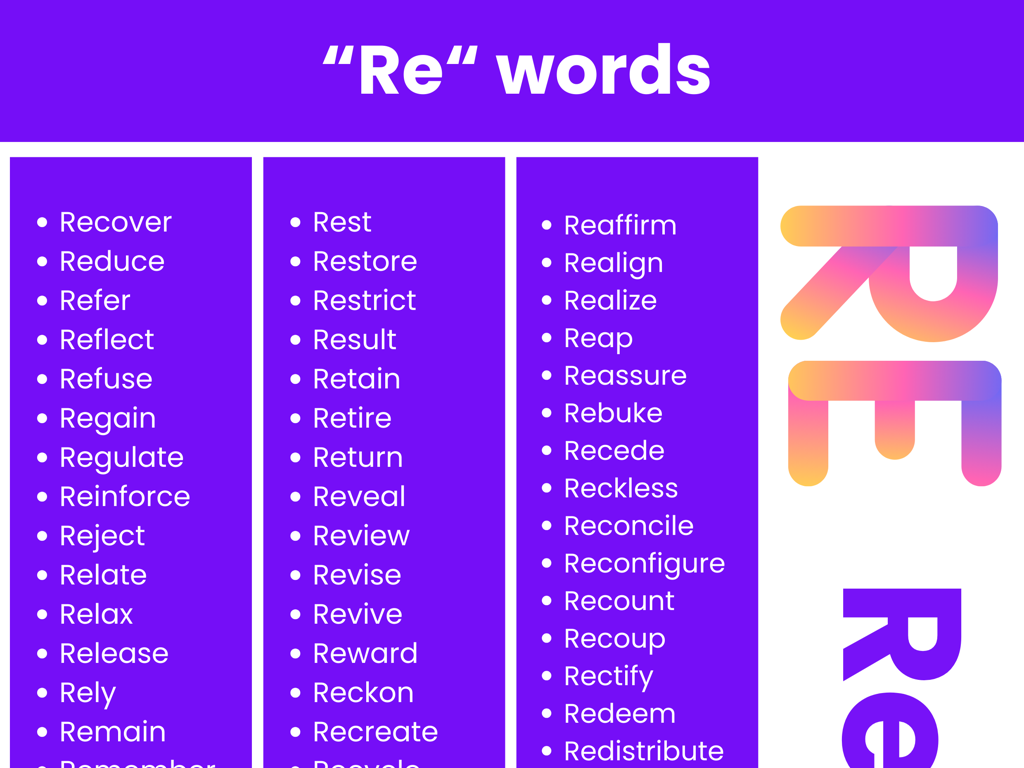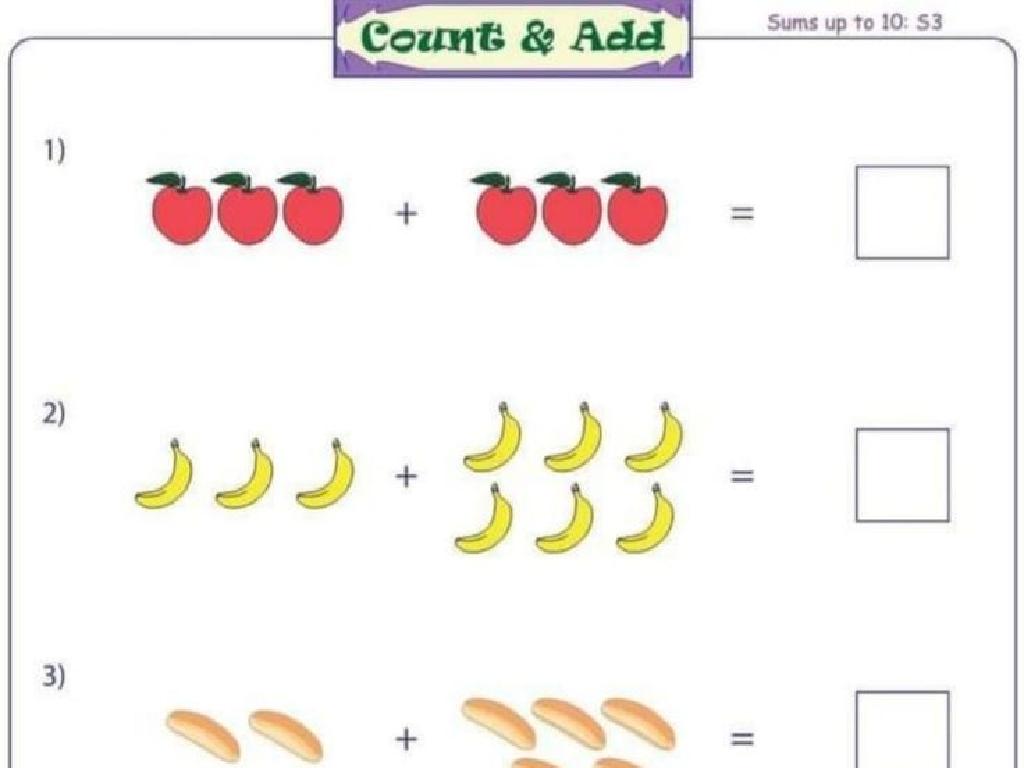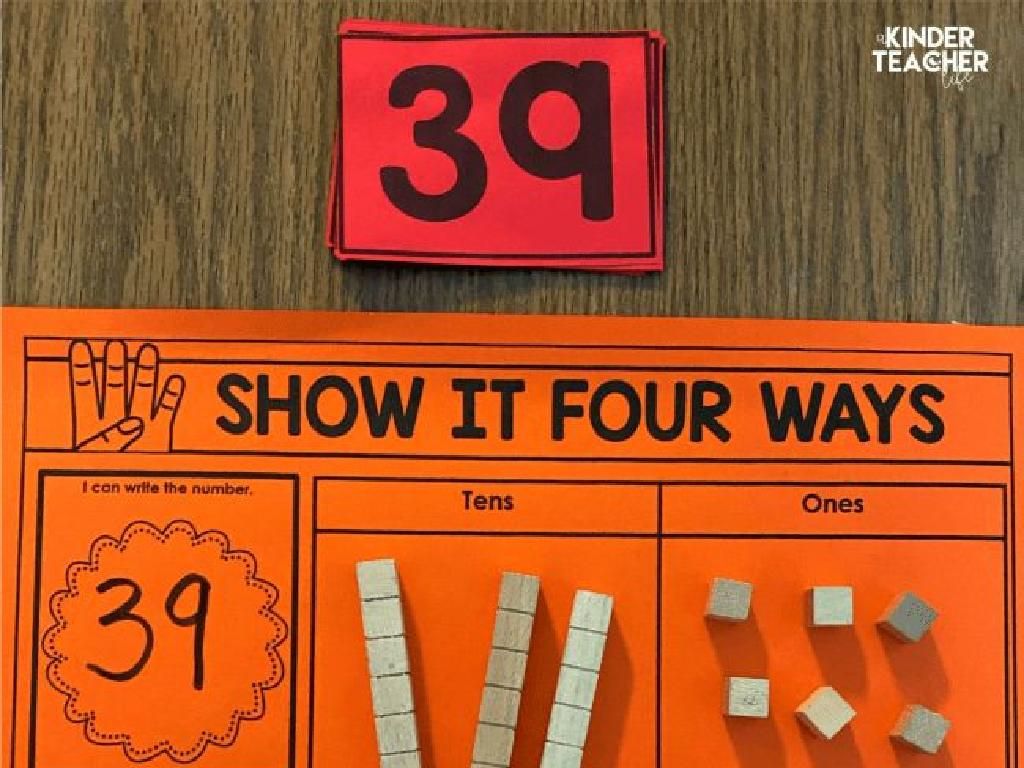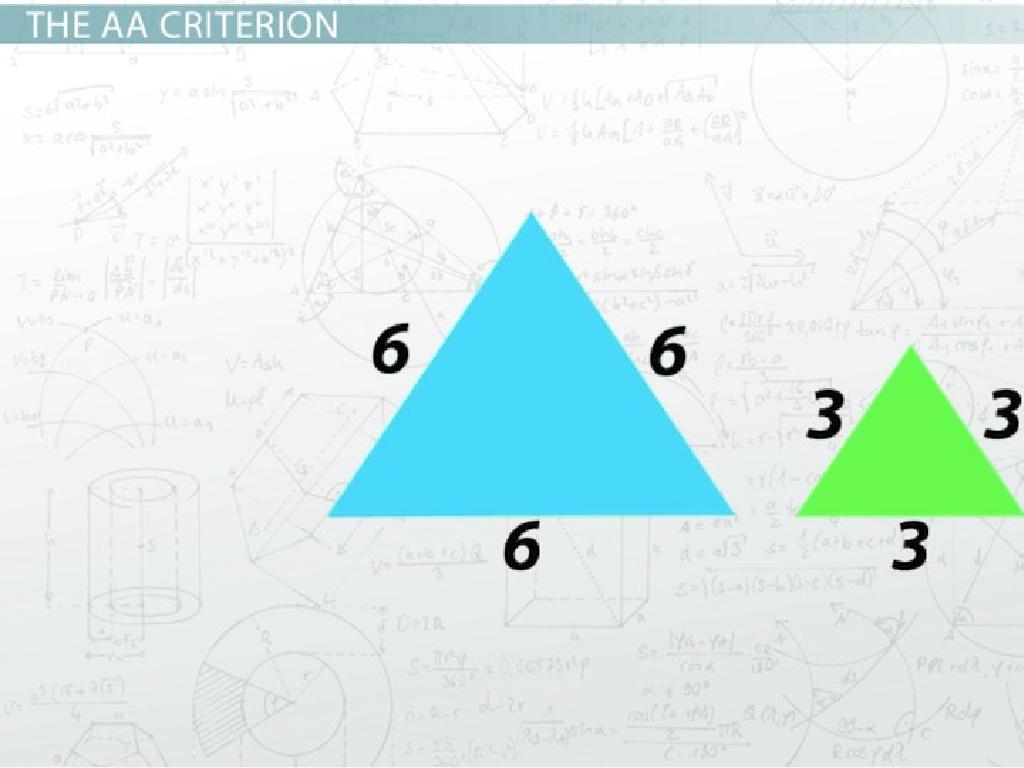Describe Tectonic Plate Boundaries Around The World
Subject: Science
Grade: Sixth grade
Topic: Earth'S Features
Please LOG IN to download the presentation. Access is available to registered users only.
View More Content
Exploring Earth’s Tectonic Plate Boundaries
– Earth’s structural layers
– Earth is made up of the crust, mantle, and core.
– Tectonic plates defined
– Large pieces of Earth’s crust that move over the mantle.
– Types of plate boundaries
– Divergent, convergent, and transform boundaries.
– Impact on Earth’s features
– Earthquakes, mountains, and volcanoes are formed.
|
This slide introduces students to the concept of tectonic plates and their boundaries, which are crucial to understanding Earth’s topographical features. Begin with a brief description of Earth’s layers, emphasizing the crust where tectonic plates reside. Explain that tectonic plates are massive sections of the Earth’s crust that slowly move over the semi-fluid upper mantle. Discuss the three main types of plate boundaries: divergent (where plates move apart), convergent (where plates move towards each other), and transform (where plates slide past one another). Highlight how the movement of these plates can lead to the formation of various geological features and phenomena such as earthquakes, mountain ranges, and volcanic activity. Encourage students to think about how these processes have shaped the landscape around them.
Exploring Earth’s Layers and Tectonic Plates
– Earth’s compositional layers
– Crust, Mantle, Outer Core, Inner Core
– Tectonic plates in the crust
– Plates float on the semi-fluid upper mantle
– Plate movements shape Earth
– Plates move, causing earthquakes, mountains
– Interaction of plate boundaries
|
This slide introduces students to the concept of Earth’s layers and the tectonic plates that make up the Earth’s crust. It’s important to explain that the Earth is composed of different layers, each with unique properties. The crust is the outermost layer, where tectonic plates are found. These plates are in constant motion due to the convection currents in the mantle beneath them. This movement is responsible for many of Earth’s surface features and phenomena, such as earthquakes, volcanic activity, and mountain formation. Discuss the different types of plate boundaries: convergent, divergent, and transform, and how their interactions lead to various geological events and formations.
Exploring Tectonic Plates
– Tectonic plates defined
– Large, solid slabs of Earth’s lithosphere
– Earth’s lithosphere composition
– Earth’s outer shell is divided into several plates
– Types of tectonic plates
– Plates are classified as continental or oceanic
– Movement and interaction
– Plates move and interact at boundaries causing earthquakes, volcanoes, and mountain building
|
Tectonic plates are the large, solid pieces of the Earth’s lithosphere (the outermost layer of the Earth) that fit together like a jigsaw puzzle. There are two types of plates: continental, which carry land, and oceanic, which carry the ocean floor. These plates are constantly moving, albeit very slowly, and their interactions at plate boundaries are responsible for many geological events such as earthquakes, volcanic activity, and the creation of mountain ranges. Understanding the movement and characteristics of these plates is crucial for comprehending the dynamic nature of our planet. Encourage students to think about the Earth’s surface as a dynamic and ever-changing environment, rather than static and unchanging.
Exploring Tectonic Plate Boundaries
– Convergent Boundaries: Coming Together
– Plates push against each other, often creating mountains.
– Divergent Boundaries: Moving Apart
– Plates drift apart, forming new crust as magma rises.
– Transform Boundaries: Sliding Side-by-Side
– Plates grind past each other, causing earthquakes.
– Impact on Earth’s Landscape
– These boundaries shape our continents and oceans.
|
This slide introduces students to the concept of tectonic plate boundaries and their role in shaping the Earth’s surface. Convergent boundaries occur where plates move towards each other, often leading to the formation of mountains or deep ocean trenches. Divergent boundaries are where plates move apart, allowing magma to rise and create new crust, often seen in mid-ocean ridges. Transform boundaries occur where plates slide horizontally past one another, which can result in earthquakes. Understanding these boundaries helps explain the distribution of geological events and the formation of various landforms. Encourage students to think of real-world examples, such as the Himalayas for convergent boundaries, the Mid-Atlantic Ridge for divergent boundaries, and the San Andreas Fault for transform boundaries.
Convergent Boundaries and Earth’s Features
– Mountains from convergent boundaries
– Plates push together, forcing the land upwards
– Volcanic arcs at convergent zones
– Volcanoes form as one plate slides under another
– The Himalayas: A real-world example
– The Himalayas were formed by the collision of the Indian and Eurasian plates
– Activity: Simulating mountain formation
– Use clay to model how mountains form when plates collide
|
Convergent boundaries occur where tectonic plates move towards each other, often resulting in the formation of mountains and volcanic arcs. The Himalayas are a prime example of mountains formed by the collision of the Indian and Eurasian plates. In class, students can simulate the process of mountain formation using clay to represent the earth’s crust. This hands-on activity will help them visualize the immense forces at work during plate collision and the resulting geological features.
Exploring Divergent Boundaries
– Features of divergent boundaries
– Mid-Ocean Ridges, Rift Valleys form where plates separate
– Real-world example: Mid-Atlantic Ridge
– The Mid-Atlantic Ridge is an underwater mountain range
– Activity: Crust formation process
– As plates diverge, magma rises to form new crust
|
This slide introduces students to divergent tectonic plate boundaries, where two plates move away from each other. Key features include Mid-Ocean Ridges and Rift Valleys, which are significant evidence of these boundaries. The Mid-Atlantic Ridge is a prime example that can be used to illustrate the concept. It’s an underwater mountain range that expands as new crust forms when magma rises from the mantle as the tectonic plates pull apart. This process can be demonstrated through a class activity where students simulate the formation of new crust using materials like clay or a sandbox to represent the diverging plates and the creation of new crust in between.
Exploring Transform Boundaries
– Earthquakes at transform boundaries
– Sudden movements along these boundaries cause earthquakes
– Fault lines creation
– Cracks where tectonic plates slide past each other
– The San Andreas Fault example
– A well-known transform boundary in California
– Simulate an earthquake in class
– Use cardboard to mimic sliding plates and create a mini ‘quake’
|
Transform boundaries are places where tectonic plates slide sideways past each other. When these plates grind against each other, the energy that builds up can cause earthquakes. Fault lines, like the San Andreas Fault in California, are surface evidence of these boundaries. To help students understand the concept, conduct an earthquake simulation activity. Have students use two pieces of cardboard to represent tectonic plates. By rubbing them against each other, they can simulate the sudden release of energy that causes an earthquake. This hands-on activity will engage students and help them visualize the process of how earthquakes occur at transform boundaries.
Exploring Plate Boundaries
– Locate major plate boundaries
– The Earth’s lithosphere is divided into tectonic plates that meet at plate boundaries.
– Impact of plate movements
– Movements can form mountains, cause earthquakes, and create volcanoes.
– Interactive map labeling
– Use an interactive map to find and label the Earth’s major plate boundaries.
– Discuss human activity effects
– Plate tectonics can affect where people live, build, and how they prepare for natural disasters.
|
This slide introduces students to the concept of tectonic plate boundaries and their significance to Earth’s geography and human activity. Start by identifying the major plate boundaries such as the Ring of Fire, Mid-Atlantic Ridge, and the Himalayan boundary. Discuss how the movement of these plates can lead to the formation of mountains, earthquakes, and volcanic activity, and how these events shape the Earth’s surface and affect human life. The interactive map activity will help students visualize and better understand the locations of these boundaries. Encourage students to consider how living near different types of boundaries might require different safety measures and preparations for natural disasters.
Class Activity: Model Plate Boundaries
– Objective: Create boundary models
– Materials: Sponges, slime, cardboard
– Group work: Build and explain boundaries
– Each group will focus on one boundary type: divergent, convergent, or transform
– Class presentation of models
– Share your model’s behavior with the class and discuss real-world examples
|
This activity is designed to help students understand the concept of tectonic plate boundaries by creating a hands-on model. The objective is to use sponges to represent the tectonic plates, slime to simulate the magma beneath the plates, and cardboard to depict the layers of the Earth. Students will work in groups to construct a model of each type of plate boundary: divergent, where plates move apart; convergent, where plates move towards each other; and transform, where plates slide past one another. After building the models, each group will explain the mechanics of their boundary type and present it to the class. Teachers should ensure that materials are available and that each group understands their task. Possible variations of the activity could include using different materials or having students research and present actual locations where these boundaries exist on Earth.
Conclusion: Tectonic Plate Boundaries
– Recap of plate boundary types
– Convergent, divergent, transform: different movements and features
– Impact on Earth’s landscape
– Mountains, volcanoes, earthquakes shaped by boundaries
– Plate boundaries and human life
– Human life is affected by natural disasters from plate movements
– Earth’s dynamic changes
|
As we conclude today’s lesson, we’ve learned about the three main types of tectonic plate boundaries: convergent, divergent, and transform, each with unique features and movements. We’ve seen how these boundaries are responsible for forming mountains, causing earthquakes, and creating volcanoes, all of which significantly shape our planet’s landscape. We’ve also discussed how these geological activities can impact human life, often leading to natural disasters that affect communities. Reflecting on today’s lesson, students should appreciate the dynamic nature of Earth and understand that it is constantly changing due to the movement of tectonic plates.






